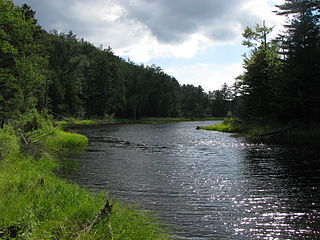Career
Looking for Your True Self? 10 Strategies for Self-Knowledge
Follow these 10 pathways to a more vital sense of self.
Posted March 18, 2016 Reviewed by Jessica Schrader
The what and the how of self-knowledge
What do people mean when they advise you to “know yourself"?
That was the subject of this post, where I described six key elements of self-knowledge. To remember them, just memorize this simple acronym: VITALS. “VITALS” (or “VITAL Signs”) stands for:
- Values
- Interests/Passions
- Temperament
- Around-the-Clock (biorhythms)
- Life Purpose/Goals
- Strengths/Skills

I loved creating the acronym “VITALS,” because, well, I love acronyms, and VITALS reflects a happy reality—once you know something about yourself and act on it, you actually do build a more vital sense of self. (For more details on VITALS, click here.)
So now you know what to look for. But how do you learn about your VITAL signs? And where can you find them?
The process can be haphazard and serendipitous. You may have a teacher who tells you that you have a strength in math or science, and the seed of a career idea is planted. You may become outraged when you witness or experience an injustice and decide you have a life goal to rectify this wrong. You may be one of the happy few who can build a life around an outstanding interest or passion, like pop star Gwen Stefani who said, “When I was able to first write a song, that’s when I found my whole self.”
While luck and genes play a part in learning who you are, you can also apply deliberate strategies to help you find your true self. Think of your search as a treasure hunt, with clues and red herrings scattered along the way. Here are 10 useful strategies to use:
10 Strategies of Self-Discovery
1. Listen to compliments and absorb them. If you have a tendency to dismiss or brush off compliments, stop! While it’s true that some people might manipulate you through compliments, many more might be noticing one of your VITAL signs—something you yourself may have overlooked. In 11th grade, my English teacher wrote at the top of one of my papers: “Do you like to write? There’s much in this essay that says that you do.” Although I took another career path, I never forgot this comment, and here I am writing after all. (Thanks, Helen Hollander!)
Knowing your own strengths is one of the foundations of self-confidence as well as of self-knowledge. Become a person who “takes in the good,” listening for compliments that could be clues to your strengths.

2. Notice your emotions and "flow" states.
When do you get happily lost in whatever you are doing? Flow states are a clue to what is satisfying to your true self. Positive feeling states like love, joy, and contentment can also contain clues.
Even negative emotions can help you out in your quest for self-knowledge. At times, emotions like anger, sadness, and fear can tell you what you may need to confront, accept, or change in your life. At other times, these same emotions might hint at people, places, or things you need to minimize or avoid to maintain your selfhood and sanity.
3. Notice what you are thinking.
Yes, mindfulness. Of course, you can meditate in order to observe the contents of your mind. But you can also just be mindful of the thoughts that arise on a minute-by-minute basis. These thoughts can guide you toward a better understanding of yourself. For example, your friend persuades you to buy a particular dress; this purchase sparks regret, not joy, because you wish you’d saved the money. Now you realize that at this moment you value savings over more possessions. A VITAL sign?
4. Become friends with your mistakes.
Learning to be yourself is easier when you develop a growth mindset—the ability to see a hard problem as a challenge rather than a stress. When you don’t have to be perfect, you can accept your mistakes, recognize that your missteps could lead to a potential learning experience, and figure out what you could do differently the next time.
Even outright failure, while painful, can be a spur to new directions. Terry Gross, the revered NPR host of “Fresh Air,” started out as an eighth grade teacher in an inner-city public school in 1972. She couldn’t control the class and was fired after six weeks. Think of all the wonderful interviews the public would have missed had she stayed—unhappily—in teaching!

5. Keep a journal or take time to reflect.
Keep a journal of the moments that might be clues to your identity. I love the now-classic “Three Good Things” exercise: At day’s end, think of three good things that you did, or that happened to you, during the day. Research indicates that this activity will increase your happiness quotient, as well as strengthen your “gratitude attitude.” But it can also highlight moments that gave you a measure of satisfaction or self-confidence, and those moments could be clues to your VITAL signs. Example: You are playing with your niece and notice that you handled several tricky situations well. Clue?
6. Listen to other people, but make and live by your own decisions.
Assuming you are an adult, with an adult’s complicated life, only you know what is best for you in the long run. When you make your own decisions—however they turn out, you pave the way for self-knowledge. Develop a healthy suspicion of “shoulds.” What do you want?
7. Talk to a therapist or counselor.
In your search for self, you may get blocked by various barriers, both internal and external. (I’ll write more about these in an upcoming blog.) A therapist or career counselor can help remove these barriers and/or help you explore new paths and grow in new directions.
8. Try personality and temperament tests.
While best done under a mental health professional’s supervision, you can also find versions of well-researched personality and temperament tests on the Internet. Although I haven’t tested out these free versions myself, you might find them helpful … as long as you take them with a few grains of salt:
Career builder
The Myers-Briggs Temperament Indicator (MBTI)
Holland Code Career Test
Caution 1: Some tests on the Internet lack scientific validity. Watch out! Caution 2: Remember, no test is the final authority on you. You are!
9. Practice assertiveness.
You may know yourself, but can you be yourself? When you express your feelings, wants, needs, and opinions in a direct, honest, and appropriate way, you are being assertive. You are also strengthening your sense of self. Example: Your spouse is critical of something you did and yells at you. You reply, “Don’t speak to me that way. If there’s something wrong, I’ll talk about it--but without the yelling.” Now you know: Being treated with respect is important to you. You can defend yourself.
10. Surround yourself with good people who accept you and foster your growth.
Some friends and relatives help you become your best self, while others thwart your self-expression and self-discovery. While you can probably learn something from all of them, you may find that your path is easier when most of the people you associate with have your best interests at heart and leave you free to follow your own star.
True Self?
Some people think there’s no such thing as a “true self.” I disagree. When your outer life and actions are congruent with your inner VITAL Signs, you experience a strong and distinct sense of self. Life becomes more exciting and vibrant.
But it IS true that we evolve over time, and your true self is constantly evolving, expanding, and contracting, again and again. Knowing yourself is a dynamic process, not a static one. Your true self is less like a snapshot and more like a video.
What experiences, books, ideas, and people have helped you “find yourself"?
© Meg Selig, 2016. All rights reserved.
If you benefited from this post, you might also enjoy these:
- "Know Yourself? 6 Specific Ways to Know Who You Are"
- "The Assertiveness Habit"
- Living With Integrity (Cynthia Kane)
For more on habits, health, and happiness, scroll down to my photo below and follow me on Facebook, Twitter, or LinkedIn.




